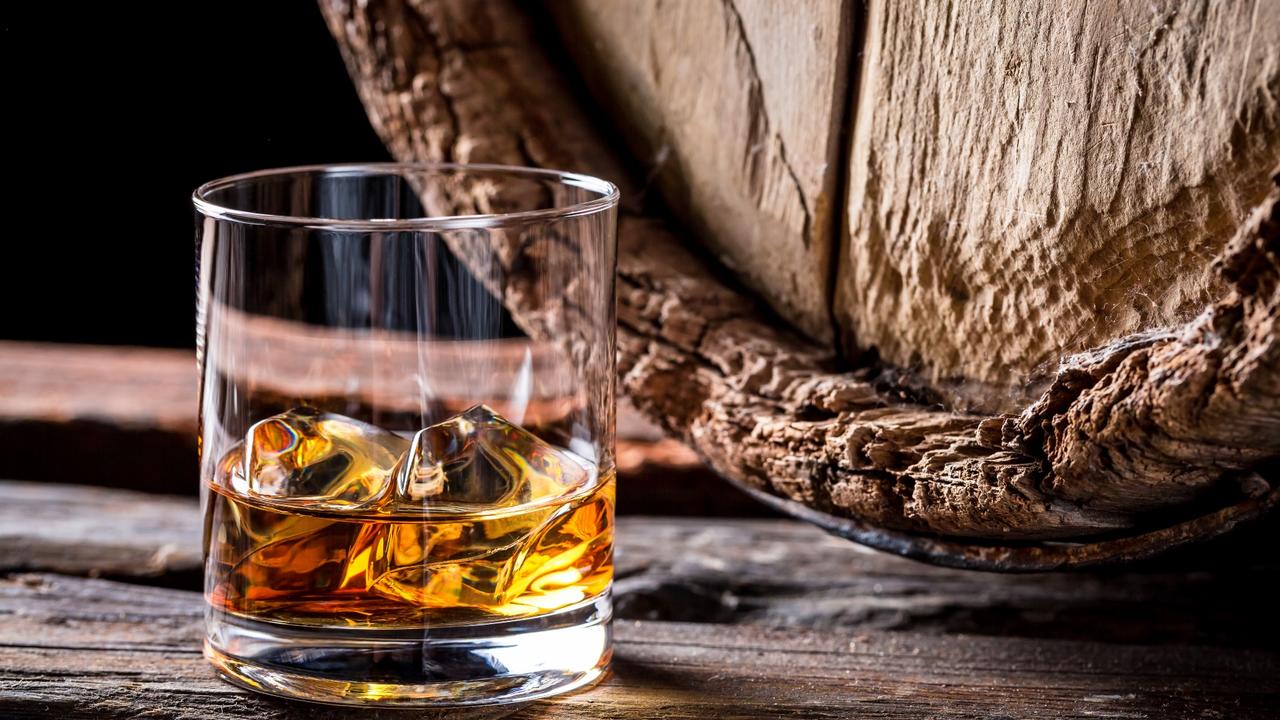Discovering what food goes with whiskey is all the rage these days. Similar to wine, finding a whiskey that can complement your food really adds to the eating and drinking experience. Find out below what the best food and whiskey pairings are…
Best food pairings with whiskey
Trying to find the best food pairings with whiskey couldn’t be easier now thanks to our comprehensive guide. Whiskey doesn’t have to be consumed exclusively at the bar. Some of your whiskey’s best notes could be unlocked through a good food pairing. The 6 best food pairings with whiskey are:
- Steak
- Smoked salmon
- Cheese
- Chocolate
- Haggis
- Sushi
1. Steak

Steak is one of the best pairings with whiskey. With a long-established relationship, steak and whiskey get along very well.
Steak and whiskey are both very versatile in style and flavours. Different cuts are best paired with a variety of whiskies. A fattier ribeye steak can go well with a smoky Ardbeg Uigeadail, whereas a leaner steak cut is nicely paired with an American whiskey, like Bourbon or Tennessee style. Whiskies with a more balanced flavour are best to pair with leaner cuts.
However, if you’re looking for a whiskey that works with most cuts, then find yourself a smoky whiskey. Strong peaty whiskies from Scotland with earthy and smoky notes are a steak's best friend. Medium-bodied rich whiskies are also a versatile choice when choosing your whiskey.
2. Smoked salmon
Unlike with steak, pairing a whiskey with smoked salmon is a delicate and precise task. The salmon has a delicate, smoky, creamy flavour. Pairing smoky, strong whiskies here would be a mistake. The strong flavours of the whisky would overwhelm the salmon, making for an unenjoyable and unappreciative experience.
A rye whiskey would be best to pair here. Rye whiskies are drier and more fiery than other whiskies. A single malt Scotch from Speyside would also be another good recommendation. A Scotch like this is delicate and creamy, just like the salmon, making for a perfect fit to balance flavours.
3. Cheese

Cheese and whiskey are a perfect combination. What’s best about this pairing is the sheer variety of combinations you can make. We’ll make it easy for you here…
Soft cheeses like brie or goat's cheese require a touch of sweetness. Imagine it’s like pairing the cheese with honey, it’s amazing. Sweet, malted barley Scotches like Glenmorangie are the best fit here.
Strong blue cheeses like Roquefort or stilton need a stronger note. Having a spicy noted whiskey would be best. The rich, peaty flavours of an Islay malt, such as Laphroaig, is a good choice. A Canadian rye whisky would also be just as good.
Soft, mild, creamy cheeses like burrata or mozzarella need whiskies with lighter notes and fragrance. The trick is to not overwhelm the cheese with the whiskey. An Irish whiskey like Green Spot is recommended for its light, crisp notes, as well as other similar Irish whiskey brands.
Cheddars can be split into two: mild and mature/vintage. Mild cheddars need a nicely balanced Bourbon. A vintage or mature cheddar requires something to challenge the strong flavours. A peat whisky from the Highlands would be our recommendation here.
Next cheese night, instead of bringing a bottle of wine, have your guests bring a different bottle of whiskey each. Pair them with the different cheeses for the ultimate tasting experience.
4. Chocolate
Maybe you’ve never thought of marrying these two elements together, but you should. The best chocolate to do this with is dark chocolate. Dark chocolate holds more intense notes to be extracted compared to milk or white chocolate, which is much sweeter.
Rich, spicy truffles pair well with a fruity GlenDronach. Whereas a dry, bitter dark chocolate is better with a peaty single malt from Islay. A chocolate containing spices like chili or ginger needs a fiery rye whisky as a pairing to fully enjoy its body of flavours.
Nuts also go well with whiskey. A Macallan whisky with sherry-like notes is perfect for an almond chocolate. A sweet, nutty hazelnut chocolate will be best paired with the nutty notes of Tullibardine single malt Scotch.
5. Haggis

Of course, as is Scottish tradition, you can enjoy a whisky alongside a traditional haggis. Add a splash of water to reduce the intensity of the Scotch whisky and enjoy the flavours of both. The excellent combination of herbs and meat means a whisky can really refresh your palate during the meal.
Our guide of whisky expert tips to drinking whisky gives you all you need to know about haggis and whisky.
6. Sushi
Sushi and whisky have become a new, exciting pairing in the world of whisky. The great rise of Japanese whisky in recent years has meant this combination has become a hit. Japanese whisky has been modelled on Scotch whisky in its production and grain mash.
Depending on the type of sushi being eaten, we offer these two whisky recommendations. For sushi with subtle ingredients, a Suntory Toki alongside it compliments it well with its light, refined flavours. For sushi with much stronger flavours, drinking a smooth, smoky Yoichi single malt will perfectly balance the flavours in your mouth.
Whiskey flavours
Whiskey is distilled from a grain mash that may be comprised of corn, rye, wheat or barley in varying proportions.
As each grain has a different sugar content, the grains used will determine the sweetness of the whiskey. For example, corn has a high sugar content. Therefore, Bourbon, which must be made from at least 51% corn, is generally sweeter compared to malted barley Scotch. These sweeter whiskies naturally suggest a sweeter accompaniment, so the best food with bourbon is often something along the lines of a pecan pie.
If you’re wondering what to eat with Scotch, then a smooth Balvenie could be well matched with smoked salmon. In general, Scotch is often better paired with savoury foods.
Other considerations that affect the present flavours are the cask used during maturation, the type of oak, the location used for maturing and whether the casks were previously used for aging another alcohol. Sherry casks are used for aging many whiskies, meaning they take on a slighter sweeter taste.
Take a look at our blog on making whisky. Here, we discuss using oak during whisky maturation.
Other flavours that can be tasted in whiskey are those of coastal whiskies, such as Caol Ila Scotch or Mars Japanese whisky. These are whiskies that have been aged in places where the sea air infuses the whiskey with its salty notes. Many types of Scotch are often referred to as ‘peaty’ or ‘smoky’ because during the malting process the barley is dried over smoking peat.
Find out what is peated whisky and how it’s made in this blog here.
Whiskey styles
Sometimes it's easier to pair your food with the whiskey you have sitting at home. We've made a concise list here of the different whiskey styles available. There's a pairing out for every whiskey, whether it's light, medium-bodied or strong.
Want to learn how to taste whiskey? Our tasting guide will convert you into an expert taster.
Light whiskey
The lighter, fruitier and more fragrant whiskies such as Glenfiddich, Dalwhinnie or Glenkinchie, are generally best enjoyed with subtler flavours. Dishes of smoked fish, seafood, sushi or goat cheese are often the best dishes to go for as neither taste eclipses another.
Medium-bodied whiskey
These whiskies may include a Macallan Scotch or an Elijah Craig Bourbon. The medium intensity of these whiskies means that they can be enjoyed with milder flavours such as those of venison, grilled chicken or a lamb stew. Roast potatoes and root vegetables also make a great accompaniment.
Read our blog ‘what is Scotch’ to find out its production, history and various styles.
Strong whiskey
Whiskies that are stronger, more full-bodied or peaty include Islay malt whiskies such as Laphroig, Lagavulin or Talisker. These whiskies need to be matched with foods that are similar in their rich, full-bodied flavours.
The best food to pair with strong whiskies are often the rich and fatty dishes that absorb the high alcohol content and complement the flavours. Foods like bacon, roast chicken, game meats or other meats cooked with spices and herbs hit the spot. Try a fruitcake with these whiskies too, you won’t regret it.
Find your perfect whiskey to pair with food in our whisky prices guide here.
Visit our ‘what is whiskey’ page to discover everything about whiskey.
Feel inspired to bartend? Take a look at our EBS Bartender Courses.

